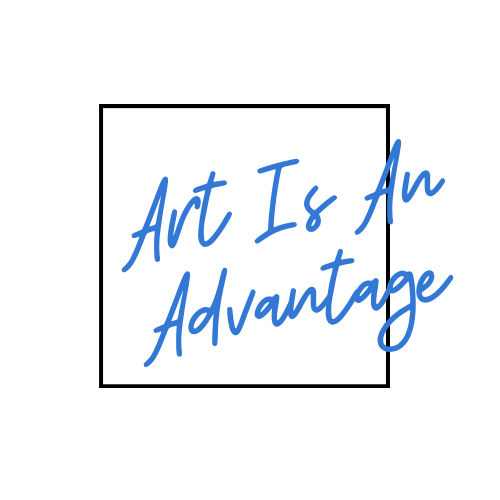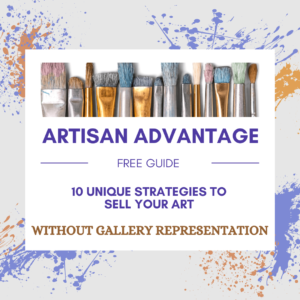
by Rebecca Sciullo | Jan 17, 2024 | Audience
Leverage the Knowledge of Your Target Audience
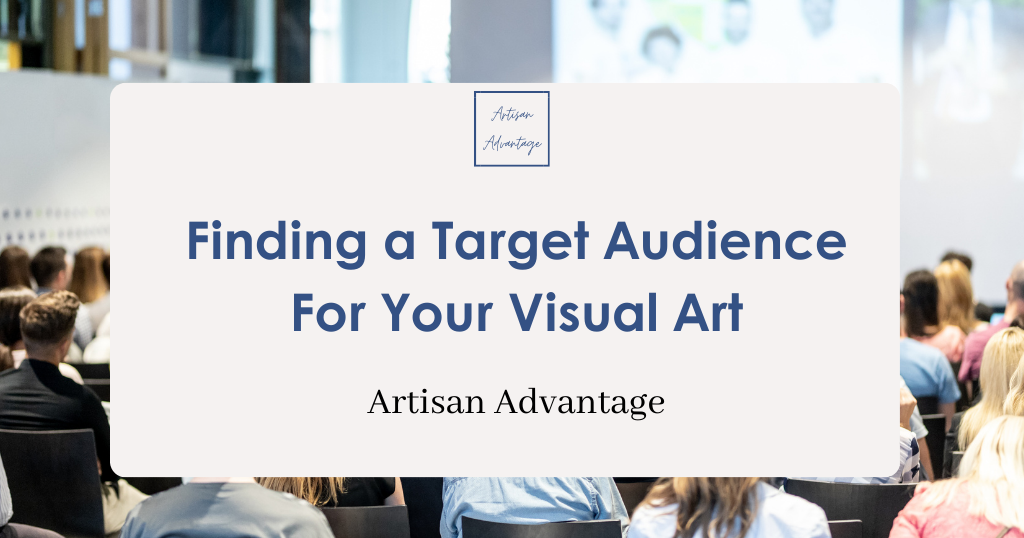
Knowing your target audience can make a significant difference in your visual art business. It’s like having a secret tool to take you from sharing and marketing work sporadically to building a strategic business.
This post is the first in a series focused on finding your audience.
First, we’ll cover what a target audience is and how visual artists can use this concept to make their marketing strategies even better.
Defining Your Target Audience
Simply put, a target audience is the specific group you aim to reach with your artwork. This group shares common characteristics, interests, and preferences, making them more likely to appreciate and engage with your work. It’s possible to have more than one target audience, and identifying these groups involves some research and strategy.
Why is Your Audience Important?
Focused Marketing Efforts
Knowing your target audience allows you to tailor your marketing efforts more precisely. Instead of casting a wide net and hoping to attract anyone and everyone, you can focus on the individuals most likely to resonate with your art. This not only saves resources but also increases the effectiveness of your promotional campaigns.
Improved Artistic Presentation
Understanding your audience’s preferences helps you make informed decisions about who you present your work to and how you do that. For example, if you’re participating in an arts festival and understand who in your target audience is likely to attend, it will help you determine the type of work you include in that show.
Building Meaningful Connections
Art is a personal experience; forming connections with your audience is the first step in helping them to purchase or choose your work. When your art speaks directly to the interests and emotions of your target audience, it becomes more than just a visual representation – it becomes a shared experience, forging a stronger bond between artist and viewer.
How to Figure Out Your Target Audience
Conduct Research
You can research the audience in several ways, some of which we will tackle in later posts. If you’ve already been selling work, look at the demographics, interests, and everything you know about your current audience. This data serves as the foundation for creating a detailed profile of your audience. If you’re new to marketing, think about your work and who might be interested. When I started working for Robert Yonke, all I knew was that he painted images of bluegrass musicians. Doing some research quickly led me to the world of Bluegrass music, which became an excellent audience for his work.
Create Customer Personas
Develop customer or buyer personas based on your research. These are fictional representations of your ideal viewers, complete with names, backgrounds, and preferences. By humanizing your target audience, you can better understand their needs and tailor your communication and marketing approach accordingly.
How to Use This Knowledge
Craft Strategic Marketing Messages
Develop marketing messages that resonate with your target audience. Speak directly to their interests, aspirations, and emotions. Whether through social media, email campaigns, or promotional events, ensure that your messaging aligns with the values of your ideal viewers.
Utilize Targeted Platforms
Identify the platforms where your target audience is most active. Whether it’s social media, art galleries, or specific online communities, focus your marketing efforts on these channels to reach your audience more effectively.
Understanding and leveraging the concept of a target audience is a cornerstone of successful marketing for visual artists. Use your research insights to inform your business decisions. Then, align your efforts with the preferences of your target audience to maximize appeal.
Would you like weekly art marking tips sent to your inbox? Join my weekly information drop here.
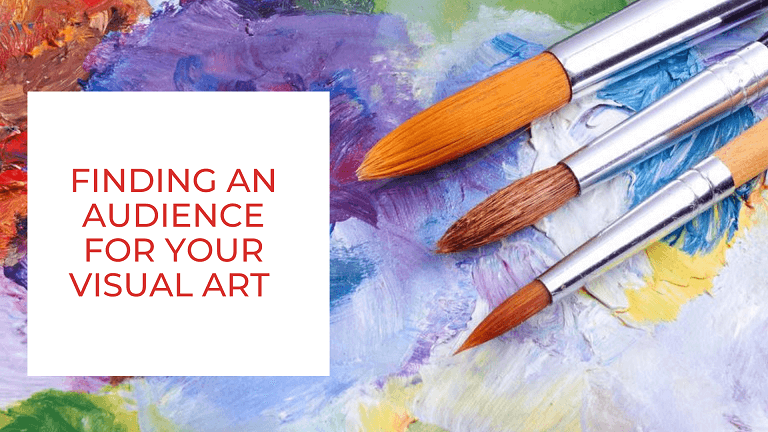
by Becky Sciullo | Nov 9, 2021 | Audience, Events
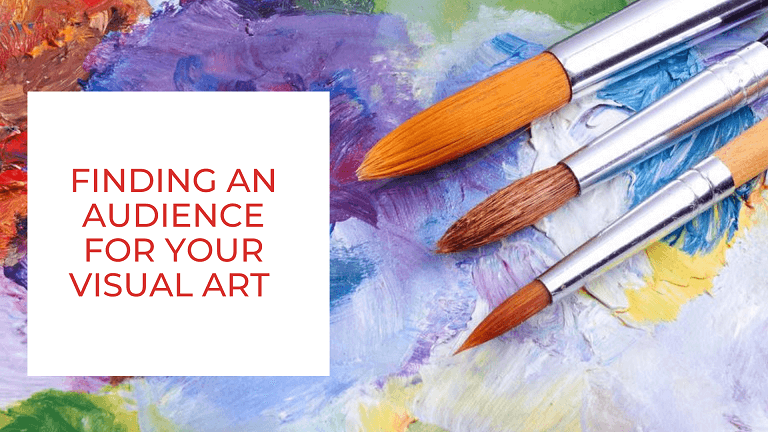 In Build a Dynamic Web Presence, learn the importance of identifying an audience for your visual art business. Figuring out the component can be one of the most challenging pieces of your the marketing puzzle. Attend a new webinar, Finding an Audience for Your Visual Art, to learn more about how to do this for your business.
In Build a Dynamic Web Presence, learn the importance of identifying an audience for your visual art business. Figuring out the component can be one of the most challenging pieces of your the marketing puzzle. Attend a new webinar, Finding an Audience for Your Visual Art, to learn more about how to do this for your business.
Learn more here.
by Becky Sciullo | Apr 23, 2021 | Audience
If You’re Selling to Everyone, You’re Selling to No One.
If you’ve ever worked in sales, you might have heard the adage, “If you’re selling to everyone, you’re selling to no one.” This is true with just about every product, including your art. In Build a Dynamic Web Presence, I stress the importance of making sure you are identifying a target audience for your artwork. This step is critical in setting up your art marketing system.
Helping The Bluegrass Painter was pretty easy as far as an audience goes. But, that is not always the case. Finding an audience comes easier to some artists than others. This is one of my favorite things to help artists figure out. While there are many different tactics and strategies that you can do to find your audience, here is an overview of the process that we go through.
 How to Find an Audience For Your Art
How to Find an Audience For Your Art
Step 1 – Assess Where You Are
Take an honest review of your current situation. This assessment includes everything from the kind of art you create to who has purchased work in the past. Other things to consider would be what people have told you about your work. Does it elicit emotion? Does it speak to them? What does it say? All of these things are part of the assessment.
Step 2 – Do Your Research
Once you take an assessment, you start to consider who might be attracted to your work based on this information. Then, you do some research which can be as easy as doing a Google search.
Step 3 – Experiment with a purpose.
Based upon what you’ve learned in Steps One and Two, start to take action. Try something. Experiment with a purpose means that you are taking action based upon what you’ve learned. But, you’re not quite sure what the results will be. It’s okay to try, and it’s okay if it doesn’t work. Guaranteed, you will learn something in the process.
Step 4 – Build upon what you learn.
Did the experiment work? Great, do more of it. If it didn’t work – why not? What can you do differently next time?
Do this process repeatedly until you start to identify the places that might fit to show you work and the people who might love it.
Get Help Finding Your Audience
If you’d like more information about finding your audience, join my email newsletter here.
by Becky Sciullo | Jan 16, 2021 | Audience
Find Your Blog Audience with Google Alerts
 Google Alerts allows you to consistently monitor the web for specific topics. If you have a Google account, you can go to Google Alerts and list terms and phrases you would like to search. It’s easy to use. You enter a word or phrase, and Google then alerts you when it finds new mentions on the web.
Google Alerts allows you to consistently monitor the web for specific topics. If you have a Google account, you can go to Google Alerts and list terms and phrases you would like to search. It’s easy to use. You enter a word or phrase, and Google then alerts you when it finds new mentions on the web.
Here are some examples of how you could use Google Alerts to find your audience.
Working in a niche
Are you creating work that speaks to a particular niche? When growing the Bluegrass Painter Blog audience, I had Google Alerts set for keywords and phrases such as bluegrass music, bluegrass art, bluegrass festivals, and more.
Find An Audience for Your Workshop
If you are a teaching artist, you could set up an alert for different types of workshops. This helps you to find groups and organizations that might be a place you can teach. You will also discover forums and publications where you can connect with potential students.
Find an Audience in Your Region
If you are looking to grow your following within a specific region, never miss another opportunity to show your work. Set up google alerts for art-related events in that region. For example, if you are an artist looking to grow in the Pittsburgh area, set up Google Alerts for phrases such as Pittsburgh Artist, Western Pennsylvania Art or Pittsburgh Art. Search related terms to alert you to an event or opportunity in the region you are interested in growing and meeting interested collectors.
This is what the Google Alert will look like:

What are People Saying about Your Work?
You can also monitor the web for mentions of your name. You might be surprised where your name pops us. Don’t miss out on positive press!
Alternative to Google Alerts
If you don’t have and don’t want a Google Account, try Social Searcher, as an alternative.
One Step in Finding Your Audience
Finding and growing your audience is an ongoing process. Web-monitoring is one way to start getting ideas about where you can find your audience. Once you identify this audience, you will want to work on connecting with and nurturing it.
We will talk more later about how you connect with and nurture this audience, but for now, start getting some google alerts and see if you come across anything interesting.
If you like posts like this, I hope you will sign up for my email newsletter for artists about blogging and maintaining a web presence.

by Becky Sciullo | Oct 26, 2020 | Audience
Dilemma Two: How do I reach my target audience?
Last month, I posted about how to figure out who the audience is for your work. Once you figure out who the audience is you want to target, you have to figure out how to reach them.
If you’re using a blog-based website for your art business, it’s not good enough to start blogging, hoping that your audience finds you. The key to a thriving art marketing system is finding this audience and connecting with them proactively.
Use Marketing Channels to Reach Your Audience
Think of these places that help you find them as the marketing channels for your art business. They are the spokes in your art marketing wheel. Here are a few marketing channels that can help you to connect with your audience.

Email Marketing
Email marketing is a universal channel that every artist can use. If you already have a list of contacts who have agreed to receive news and information from you, you can contact them directly via email with updates and information about your work. Your best bet is to use an email marketing service to do this. Share new work, events, and any other information that you think would interest them.
If you don’t have a list, that’s ok. You can start by asking friends and family if they would like to receive updates about your work. Then, every time you interact with a customer or fan, make sure you give them the opportunity to receive your email.
Social Media
Social media platforms such as Instagram, Pinterest, and Facebook are examples of marketing channels. Depending upon your audience, one may be better than the other. For social media, don’t worry about being on all platforms. Choose the ones that make the most sense for your business and focus on sharing work there.
Publicity
Don’t underestimate the power of a well-written press release. You get to decide what is newsworthy for your audience. Have you won an award? Did you complete a series of work? Are you offering a workshop? Do not overlook sending out a press release to media outlets and blogs that have audiences potentially interested in your message.
Your Art Marketing System Can’t Run without an Audience.
Remember the example of the art marketing wheel? Your audience is the tire – a critical part of moving your business forward. First, identify your audience, then figure out how and where to reach them. Use your artist blog as your home base for all of the content you want to share with them.
Follow this blog as we start to dig into the details of art marketing channels and audiences over the coming weeks.
Join my Create! Sell! Newsletter here.
Photo by NordWood Themes on Unsplash
by Rebecca Sciullo | Sep 12, 2018 | Audience
Yes! You can do it!
Are you looking to get your creative business noticed? Or, would you like to expand the collector base for your artwork? To find new collectors for their work, smart artists use networking. Not just networking with other artists, but looking outside of the creative community to grow their audiences. Building relationships with people in different types of businesses can lead to more opportunities for your work.
There are many ways to do this, through professional networking organizations, local chambers of commerce and finding events through tools such as Meetup and Eventbrite. Once you find an event to attend, the following tips will help you to make the most of it.
Tips for Your Next Networking Opportunity
Just do it.
Are you hesitant to take that first step? Start by setting a simple goal for yourself to attend one event per month. Even better, find a friend and buddy up for the event. Then, when you are more comfortable, see if you can increase the number to two or three a month. The more events you attend, the more comfortable you will become with the process.
Practice.
It’s common to be nervous about attending a new event where you might not know many people. If you’re not involved in group events on a regular basis, it might seem awkward for you. Practice introductions ahead of time to put yourself at ease, especially if the meeting agenda includes formal introductions or “commercials”. You could also plan some questions and conversation starters in advance. You might even try rehearsing a bit with a friend or family member beforehand.
Make a Plan.
Before the event, try to learn who might be in attendance. You might be able to find a list of group members if you’re attending an event being sponsored by a Chamber or other business group. You might find that you already know a few people on this list that you can look forward to seeing. Or, you might find an interesting contact that you would like to meet. Knowing who might be there helps you to prepare to make the most of the event.
Have a Goal.
Set a simple goal. Can you make one new contact at the event or have one solid conversation? Don’t worry about getting to everyone in the room. Rather, just be prepared, but then let it happen, knowing you are ready and excited to meet a new contact or two.
Take Notes.
At the end of the event, if you have a good conversation with someone, make a note of what you would like to remember about your discussion. Notes will help you make more personal and meaningful follow-ups.
Follow Up.
Within a week of the event, take time to sit down and go through any notes or business cards that you’ve collected. Then, take time to reach out on either social media or with a handwritten note (using your art if possible)!
A Final Note
Remember, it’s not about you. Focus on learning about the people you have the opportunity to meet at the event, rather than worrying about getting your work in front of them. Just make a few friends, follow-up and take it from there.
Get more ideas on how to grow your art business by subscribing to the Artisan Advantage newsletter here.

